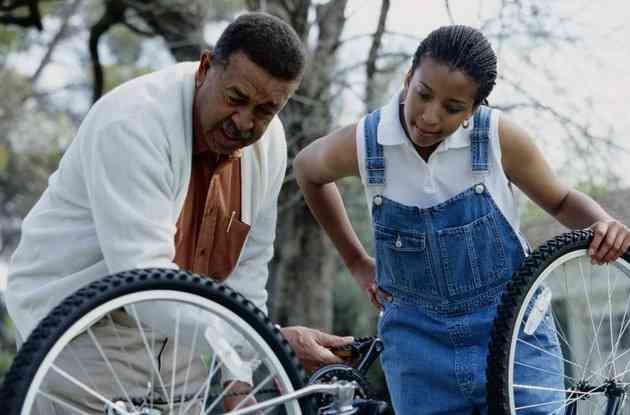How to Get Rid of Children's Fevers

A fever is a sign that your child's body is fighting infection or illness. A fever occurs when the body temperature exceeds the average temperature of 98.6 degrees Fahrenheit. While a child's fever causes potential panic, most low grade temperatures aren't serious and can be successfully treated at home. Still, a fever can make your child feel nauseous and fatigued, so help comfort him by working to bring down his fever until it's completely gone. Consult your child's doctor for more information.
 A little girl laying in bed with her father feeling her forehead and a thermometer under her armpit. (Image: kdshutterman/iStock/Getty Images)
A little girl laying in bed with her father feeling her forehead and a thermometer under her armpit. (Image: kdshutterman/iStock/Getty Images)Step 1
Offer ibuprofen or acetaminophen only after you've contacted your doctor and asked about the correct dosage. Some children are too young to take painkillers and, in some cases, your doctor needs to examine your child before prescribing medication. Painkillers work to relieve inflammation and reduce body temperature for greater comfort. Do not use aspirin as there is a risk of Reyes syndrome.
Step 2
Soak a rag in cool water and lay it across your child's head. A heightened body temperature can be uncomfortable and result in aches and fatigue. Bringing down the temperature of the head helps get rid of the fever on a short-term basis. Draw a lukewarm bath for your child, but remove her if she begins to shake in cool water. This raises the body temperature once again.
Step 3
Give your child plenty of fluids to help replace the water lost in the body through sweat. Children sweat more when they have a fever and are prone to dehydration. Water, pediatric electrolyte drinks, milk and soup broth can help your child to stay hydrated. Avoid sugary drinks such as soda and juice, as they potentially draw water into the intestines and exacerbate flu symptoms such as diarrhea.
Step 4
Allow your child to rest as much as possible. Because a fever is a sign your child's body is fighting an infection, he'll be more tired and lethargic than usual. Allowing him to rest ensures that his body's energy goes toward fighting that infection for a quicker recovery period to get rid of the fever.
Step 5
Call a doctor if your three month old baby has a temperature over 100.4 degrees Fahrenheit, your three to six month old has a temperature over 101 degrees Fahrenheit, your six month old baby has a fever of 102 degrees Fahrenheit, or your baby between six months and a year old has a temperature over 103 degrees Fahrenheit. These all signify serious infection and should not be treated at home.
Things You'll Need
Ibuprofen or acetaminophen
Rag
Fluids




